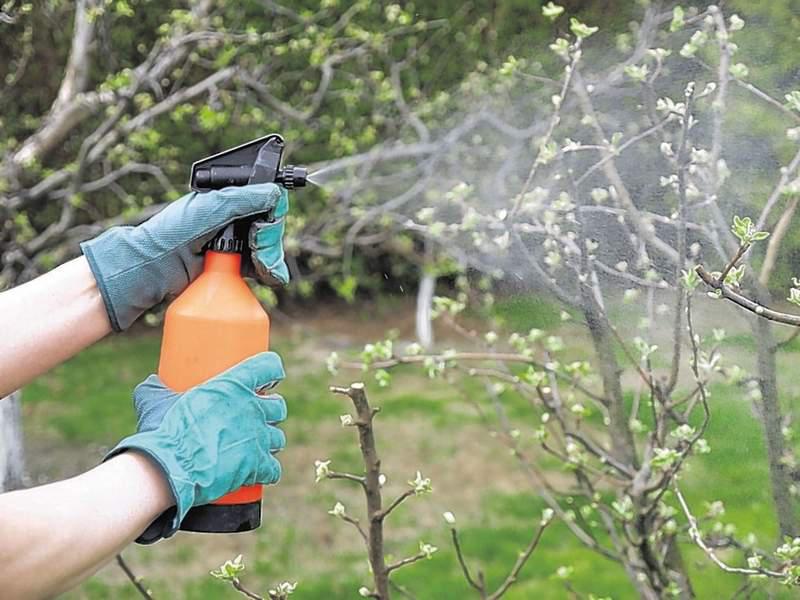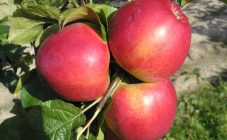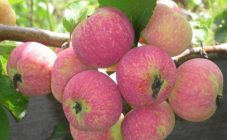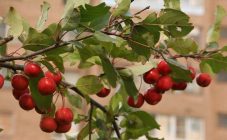Content:
It is very difficult to overestimate a culture like the Ranet apple tree. If you plant this variety on your site, every year you can delight yourself with beautiful apples with a bright northern sourness.
History of creation
The Ranet apple variety was obtained by crossing the Siberian berry and a number of other varieties that have become widespread in the European part of the country, Russia, or the slate apple. According to some reports, the breeding of the variety took place back in 1937. Ranet apples can be eaten fresh or processed. They make incredibly tasty compotes, jams and preserves.
Few people know, but the amount of biologically active substances in Ranetki apples is almost 10 times higher than those of other varieties. Their regular use in food contributes to the removal of heavy metals from the human body. So the benefits of the variety are almost undeniable.
Description of the variety
According to the description, the Ranet apple tree exists in a large number of varieties that differ in the appearance of the tree and the ripening time. There is Ranet summer apple variety, Honey, Candy, Golden, Purple. Relatively recently, the Ranetka columnar apple tree was even bred. Many gardeners prefer to plant several varieties of plants on their plots at the same time, which have summer, autumn and winter periods of fruit ripening.
In the southern regions, gardeners prefer apple trees with large and fairly sweet fruits, clearly underestimating their northern sourness. But Ranet, as an apple variety, takes root well in almost all climatic zones. The only exception is the Far North.
The apple variety requires a lot of planting space. One plant requires a plot of at least 5x5 meters. The height of the tree can be up to five meters.
Depending on the variety, Ranetki apples are harvested at the end of summer or in September. One plant can be harvested from 50 to 100 kg.
Due to the presence of Siberian roots, the Golden Ranet apple trees are distinguished by a high rate of frost resistance. They perfectly survive even severe frosts. Wild varieties of Ranetok are able to withstand frosts down to -47 degrees.
When it comes to disease and pest resistance, the culture has little to be proud of. The immunity of all varieties of Ranetki is quite low.
Features of agricultural technology
According to the description, the most suitable time for planting seedlings of any of the varieties of the Ranetka apple tree is early spring, before the start of sap flow, or late autumn, after the leaves have fallen from the trees. To plant Ranetki apples, it is strongly recommended to prepare pits for planting in advance. The most suitable size would be 70x70x70 cm. Humus and a small amount of fertilizer should be placed on the bottom without fail. In addition, it is recommended to immediately insert a garter post into the planting hole.
The root circle of the Ranetki apple-tree requires mandatory mulching. This simple procedure will allow for a long time to maintain the proper level of moisture in the soil and prevent harmful insects from entering the trunk from the grass. It is allowed to mulch with sawdust, hay or freshly cut grass.
The Ranetka variety requires a mandatory plant garter. In spring, tree trunks should be whitewashed with lime.
Ranetki are not particularly demanding on soils, but practice shows that they grow especially well on loam. If the soil is sandy, clayey or acidic, it is recommended to feed with superphosphate, potassium sulfate or humus.
Starting from the second year of the plant's life, after the foliage has fallen, it is recommended to start forming the crown. Alternatively, this manipulation is allowed in early spring. Sick, dry, old shoots, as well as fresh green branches located towards the trunk at an acute angle, should be removed. The described measures will help keep the branches from breaking off under the influence of the gravity of the apples.
Agrotechnical measures in the case of Ranet must necessarily include actions aimed at combating diseases and insects that can harm the crop. After all, the popular apple tree has a fairly large number of them.
Prevention is especially important. For its implementation, before the start of sap flow, apple trees should be thoroughly sprayed with a urea solution at the rate of 700 g of composition per 10 liters of water. This will kill most of the wintering pests.
Special biological preparations for migrating harmful insects should not be neglected either. They should be used, in accordance with the manufacturer's recommendations, at least once a month.
In parallel, it is recommended to use solutions whose action is aimed at increasing the resistance of the culture, both to a number of diseases and to the adverse effects of the environment.
When processing trees, it is strongly recommended to adhere to the following simple rules:
- in the summer, with caution, you should spray apple trees with a boudross liquid, since this procedure can lead to a burn for the plant; experts recommend pre-testing Ranet's reaction to treatment in a small area;
- if cracks appear on the trees for some reason, they need to be treated with a 1% solution of copper sulfate or covered with garden varnish; the same should be done when pruning large branches;
- if you use special trapping belts made of corrugated paper, you can reliably protect the crop from harmful insects crawling along the trunk for the whole season;
- by laying a cloth with non-drying glue applied around the trunk, it will be much easier to catch the pest - they will simply stick to the surface.
Advantages and disadvantages
Like any other apple variety, Ranetka in all its species diversity has both obvious advantages and some disadvantages. The benefits of culture include:
- high rate of frost resistance;
- ease of care and general unpretentiousness in maintenance;
- many opportunities for crop processing;
- undeniable health benefits;
- long shelf life after harvest.
Not everyone can eat sweet and sour Ranet fresh. But this is not necessary. On the Internet, you can easily find any recipe for blanks that can be used in relation to Ranet.
Of the minuses of the variety, it should be mentioned:
- sour taste of apples;
- the tree requires too much space on the site;
- weak immunity to most diseases and pests.
Despite the shortcomings, the variety is in high demand among gardeners and is actively cultivated in garden plots in many parts of Russia. This is due to the useful, if not to say, healing properties of culture and the simplicity of its cultivation.















